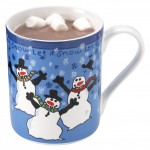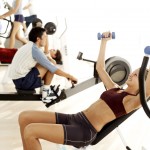 Why Aqua Aerobics Is a Great Workout…any time of the year!
Why Aqua Aerobics Is a Great Workout…any time of the year!
If you have access to an indoor pool, aqua aerobics can provide a great workout at any time during the year. There are a lot of reasons to make a water workout a part of the weekly exercise routine. So instead of automatically categorizing this workout as summer only, consider it as a year round option!
A low impact workout. For people like runners who have an injury, or just want to cross-train to give the joints a break, aqua aerobics can provide the answer. You can get in the same workout you would on land, but with a lot less strain on your body.
Super cardio. Have you ever tried to push through the water to try a kick boxing move? You begin to appreciate the impact of water resistance in a workout. It takes a lot of effort to work out in water, which brings the heart rate up and gets the blood pumping. For a super cardio workout – try aqua jogging.
It’s so fun, you’ll keep doing it. Many people get tired of the cardio machines at the gym – it can be pretty boring, so sometimes people just don’t keep to it. By contrast, an aqua aerobics class offers a wide range of exercises. The exercises can have similar benefits as the treadmill or the weight room, and the whole experience is so pleasant, it encourages people to keep coming back.
Talk about variety. With aqua aerobics classes, there’s a lot of wonderful alternatives that give a great workout. The advantage there is that with most of your body underwater, it doesn’t feel as awkward and you don’t risk falling. For relaxation, try aqua yoga or tai chi – relaxing exercise routines with the soothing component of water added in.
There’s no need to wait for summer – just try aqua aerobics to see if it works for you. You’ll be pleasantly surprised at how much you enjoy the experience.
Becky Flanigan is a freelance writer for InTheSwim.com. In her spare time, she loves to go hiking and enjoy nature, and she is now taking oil painting classes to capture the images she has seen on her hikes.
 Subscribe
Subscribe







